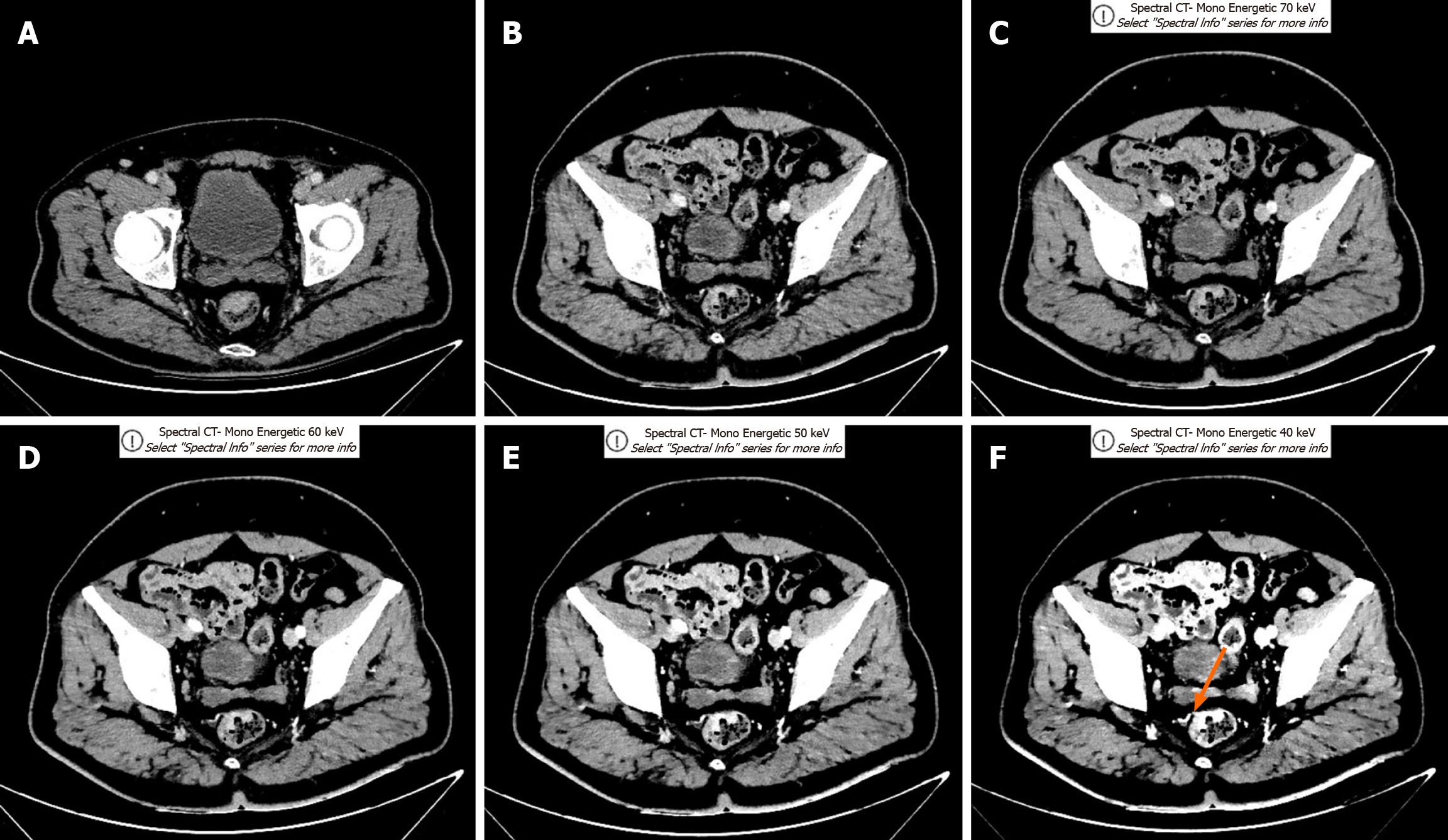Copyright
©The Author(s) 2025.
World J Gastroenterol. Aug 28, 2025; 31(32): 110573
Published online Aug 28, 2025. doi: 10.3748/wjg.v31.i32.110573
Published online Aug 28, 2025. doi: 10.3748/wjg.v31.i32.110573
Figure 3 T-staging in axial polyenergetic image, oblique axial polyenergetic image, and 40-70 keV oblique axial virtual monoenergetic images for T3 stage by pathology.
An upper rectal cancer patient with axial polyenergetic image (PEI), oblique axial (OA) PEI, and 40-70 keV oblique virtual monoenergetic images (VMIs), was proved to be T3 by pathology. A: Axial PEI showed a smooth outer border of the thickened rectal wall without peritumoral fat stranding (PFS), suggesting stage T2; B-F: Oblique PEI (B) and 70-40 keV OA VMIs (C-F) demonstrated a smooth outer border of the thickened rectal wall with spiculation extending into the perirectal fat (orange arrow) but without PFS, suggesting stage T3. Compared to axial PEI (A), the lesion was better visualized at 40-50 keV due to increased lesion attenuation and hyper-enhancement at the anterior rectal wall. Among all images, the 40-50 keV OA VMIs (E and F) performed best.
- Citation: Chen FX, Jiang KK, Zhu JF, Wang MR, Fan XL, Yang JS, He BS. Diagnostic accuracy of dual-layer spectral computed tomography virtual monoenergetic imaging with multiplanar reformation for T-staging of colorectal cancer. World J Gastroenterol 2025; 31(32): 110573
- URL: https://www.wjgnet.com/1007-9327/full/v31/i32/110573.htm
- DOI: https://dx.doi.org/10.3748/wjg.v31.i32.110573









